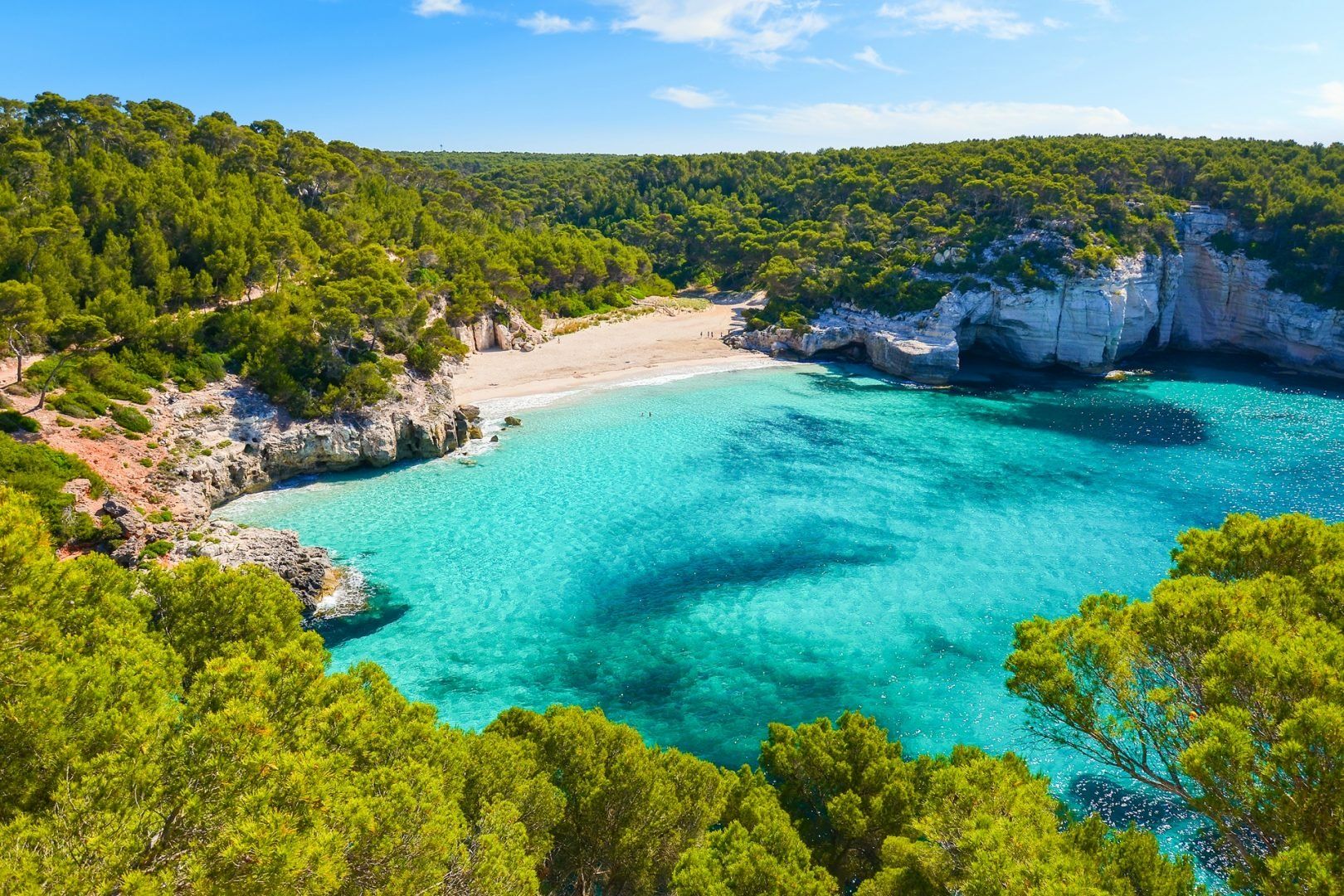Mallorca: Best for travelers who want it all
Can’t decide what kind of trip you want? Go to Mallorca – the best Balearic Island if you want a bit of everything. It’s the largest of Spain’s Balearic Islands, and whether you're here for beaches, nightlife, history, food, or hiking, you’ll find your fix.
Let’s start with the obvious: the beaches. From wide golden stretches like Playa de Muro to tucked-away coves near Cala Deià, the coastline delivers. Nightlife? You've got everything from rooftop cocktails in Palma to salsa bars in Sóller. With over 2,500 restaurants and 41 marinas, you'll never be short on dinner options or sea views.
Mallorca also suits families, especially those with teens, thanks to its variety. Palma mixes history with style – think palm-lined promenades, Moorish palaces, and edgy boutiques. But if you’re looking to escape the city, the best areas to stay in Mallorca include Alcúdia and Pollença, where you’ll have quick access to hiking trails, beaches, and rural charm.
Planning a romantic escape? There’s no shortage of the best places to stay in Mallorca for couples – from boutique fincas tucked into the Tramuntana mountains to sleek, adults-only hotels along the coast, perfect for slow mornings and sunset drinks.
When you’re ready to slow down even more, tour the island’s underrated wine region around Binissalem, where you can visit family-run vineyards without the crowds.
How to get to Mallorca
Mallorca has an international airport near Palma with frequent flights from across Europe. Ferries also connect the island to Barcelona, Valencia, and Ibiza.
When to visit Mallorca
May to June and September to October offer the best balance – sunny skies, warm seas, and fewer crowds. July and August are peak season, with packed beaches and higher prices, but great for nightlife and festivals.











